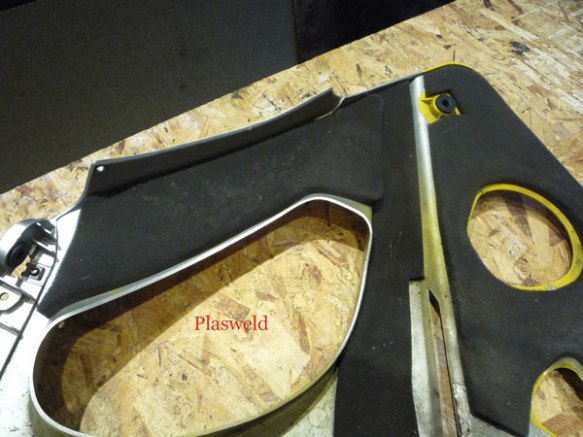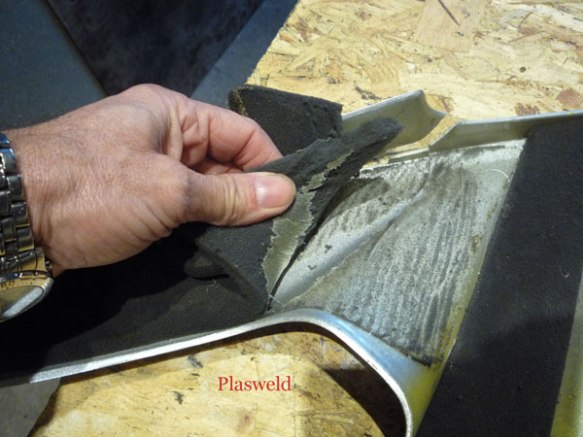When considering whether or not a panel is worth repairing you need to take a number of things into account: Paint, decals, age and in some cases the foam backing.
 Some manufacturers stick foam to the back of their side panels to stop the engine/frame
Some manufacturers stick foam to the back of their side panels to stop the engine/frame
work rubbing against the back of the faring. It also stops any knocking noises and vibration while the bike is being ridden. When a panel sustains damage resulting in a crack or breakage or both, it does not always transfer to the foam behind. Even if it has not, the foam needs to be removed to do a repair. Where plastic welding is used the heat from the machine will melt the foam giving of a noxious gas. In most cases we can separate the foam in one piece from the plastic panel. So it can be reattached after the repair is compete, there by saving the cost of new foam for the customer.
There are some situations where it can not be removed in one piece. Foam, like plastic, deteriorates with age but at a faster rate. There are two types of foam backing – open cell and sealed. The former gets impregnated with road dirt, oil etc, this helps to degrade the backing more quickly turning it to dust, making it impossible to remove in some cases. Because the later is sealed it repels most of the detritus thrown up from the road and stops oil soaking into it. This increases the life of the foam, therefore making it a better candidate for removal when a repair is needed. The sealing helps to keep it in one piece making it easier to remove.

The pictures show.
Thunder cat side panel. One with the foam mat partly removed.
